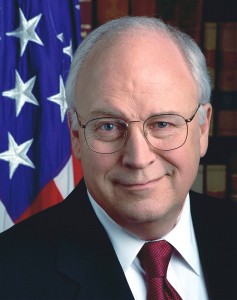Dick Cheney and heart transplant
Former Vice President Dick Cheney was recovering Saturday at a Virginia hospital after receiving a heart transplant – his office said.
Cheney was in the Intensive Care Unit of Inova Fairfax Hospital in Falls Church – his office said.
Cheney, 71, who served as vice president in the George W. Bush administration, has had a long history of heart trouble and has been on the cardiac transplant list for more than 20 months.
“Although the former Vice President and his family do not know the identity of the donor, they will be forever grateful for this lifesaving gift” – aide Kara Ahern said in a written statement that was authenticated by several close associates of the former vice president.
More than 3.100 Americans currently are on the national waiting list for a heart transplant. Just over 2.300 heart transplants were performed last year, according to the United Network for Organ Sharing. And 330 people died while waiting.
According to UNOS, 332 people over age 65 received a heart transplant last year. The majority of transplants occur in 50- to 64-year-olds.
The odds of survival are good. More than 70 percent of heart transplant recipients live at least five years, although survival is a bit lower for people over age 65.
Former Vice President Dick Cheney received a heart transplant on Saturday – his office announced.
A statement from the former vice president’s office said the 71-year-old is now recovering in the intensive care unit of Inova Fairfax Hospital in Falls Church, Va., outside Washington.
The statement said Cheney had been on the transplant list for 20 months and did not know the identity of the donor.
“Although the former vice president and his family do not know the identity of the donor, they will be forever grateful for this lifesaving gift” – the statement read.
Cheney, who served as President George W. Bush’s vice president from 2001 to 2009, has a long history of heart problems. He suffered his first heart attack at age 37 and his fifth in 2010. In 1988, he underwent quadruple bypass surgery and has had several other heart surgeries since then, including multiple angioplasties and the implantation of a pacemaker.
In 2010, he had a battery-powered heart pump known as a Left Ventricular Assist Device implanted to keep his heart working – a device that is often used for short periods by patients awaiting a transplant.
In an interview early last year, Cheney called the heart pump a “wondrous device,” but said that it made it “awkward to walk around.” The device, which takes over the job of the heart’s main pumping chamber, is powered by batteries worn in a fanny pack.
Cheney also said in the interview that “he would have to make have to make a decision at some point” about whether to have a heart transplant.
“What’s happened over time is the technology’s gotten better and better and we’ve gotten more and more experience with people living with this technology” – he added.
Former Vice President Dick Cheney is recovering from a heart transplant to treat end-stage heart failure — an often misunderstood disease that is one of the most costly health problems in America.
According to the New York Times -
“Mr. Cheney, 71, who has suffered five heart attacks and was in end-stage heart failure, had been on the waiting list for a new heart for 20 months, the statement said. Mr. Cheney was recovering in the intensive care unit of Inova Fairfax Hospital in Falls Church, Va.
“Although the former vice president and his family do not know the identity of the donor, they will be forever grateful for this lifesaving gift” – said the statement from an aide, Kara Ahern. The statement thanked doctors and staff at the hospital and at George Washington University Hospital in Washington for “their continued outstanding care.”
Cheney had already had a left-ventricular assist device, a type of heart pump made by device maker Thoratec, and had spoken on the Today Show about the possibility of a transplant.
Heart failure is a condition in which the heart has become too weak to pump blood. Patients’ lungs can fill with water as they literally feel as if they are drowning. It has proven maddeningly difficult to develop new medicines for the end stages of the disease, despite the efforts of drug companies such as Merck and Johnson & Johnson.
